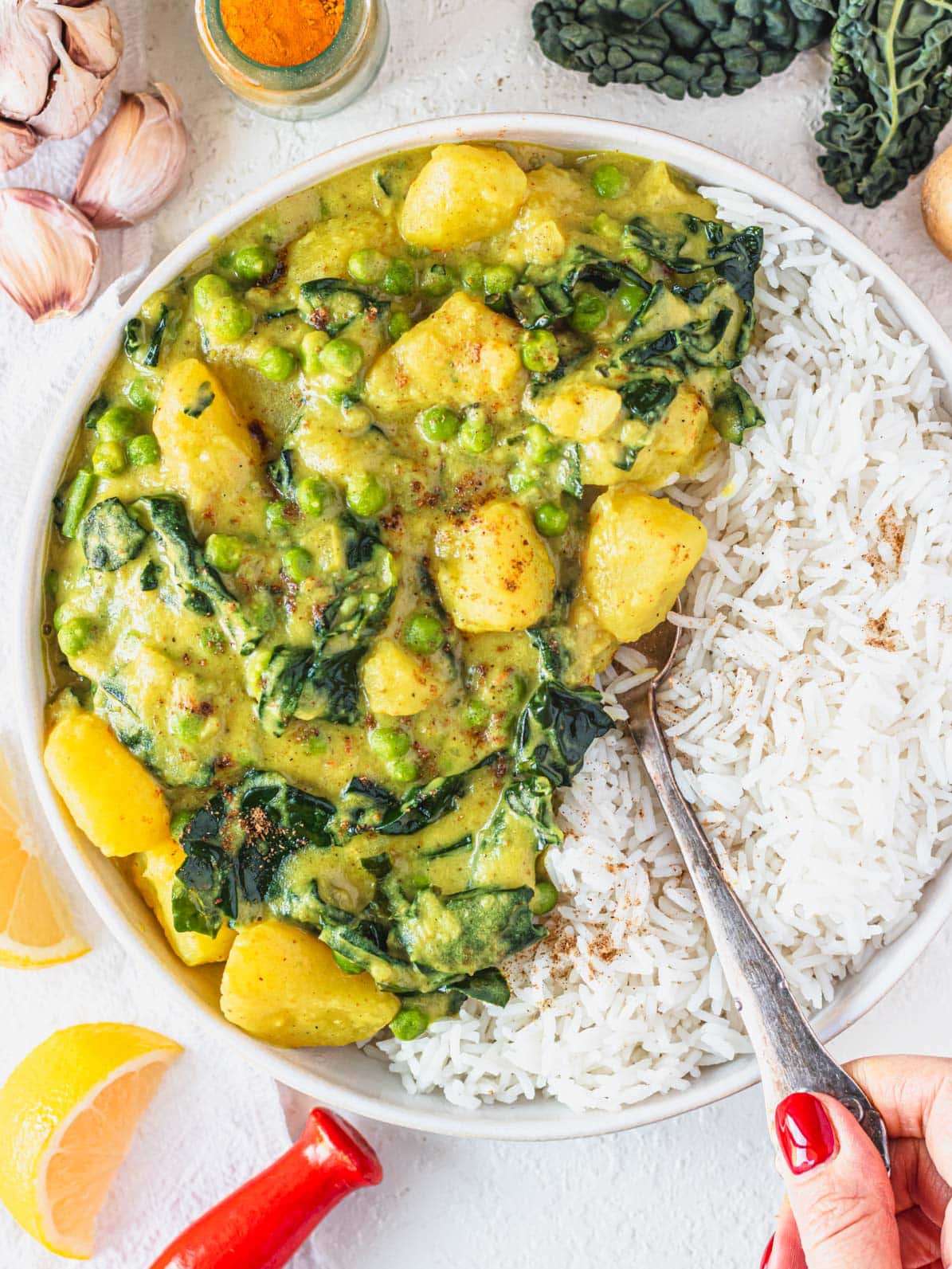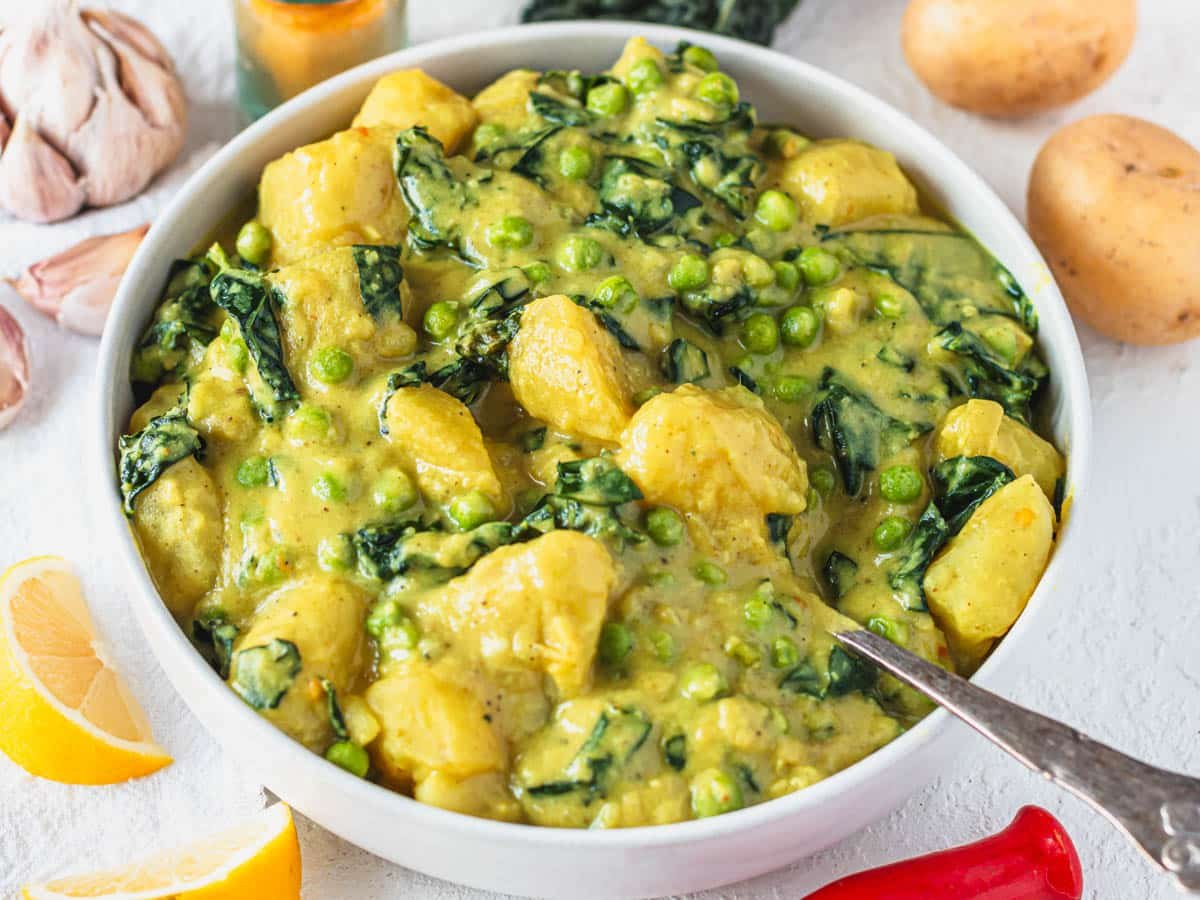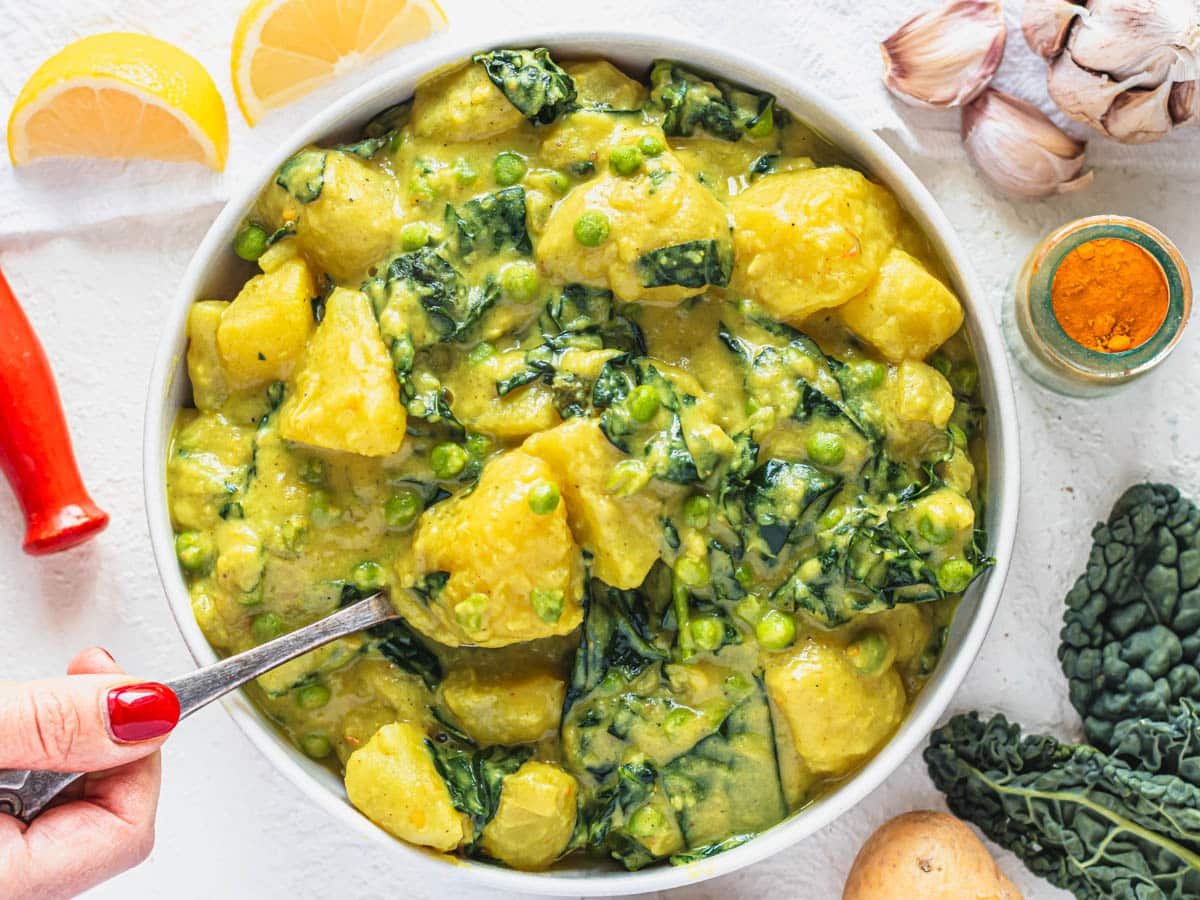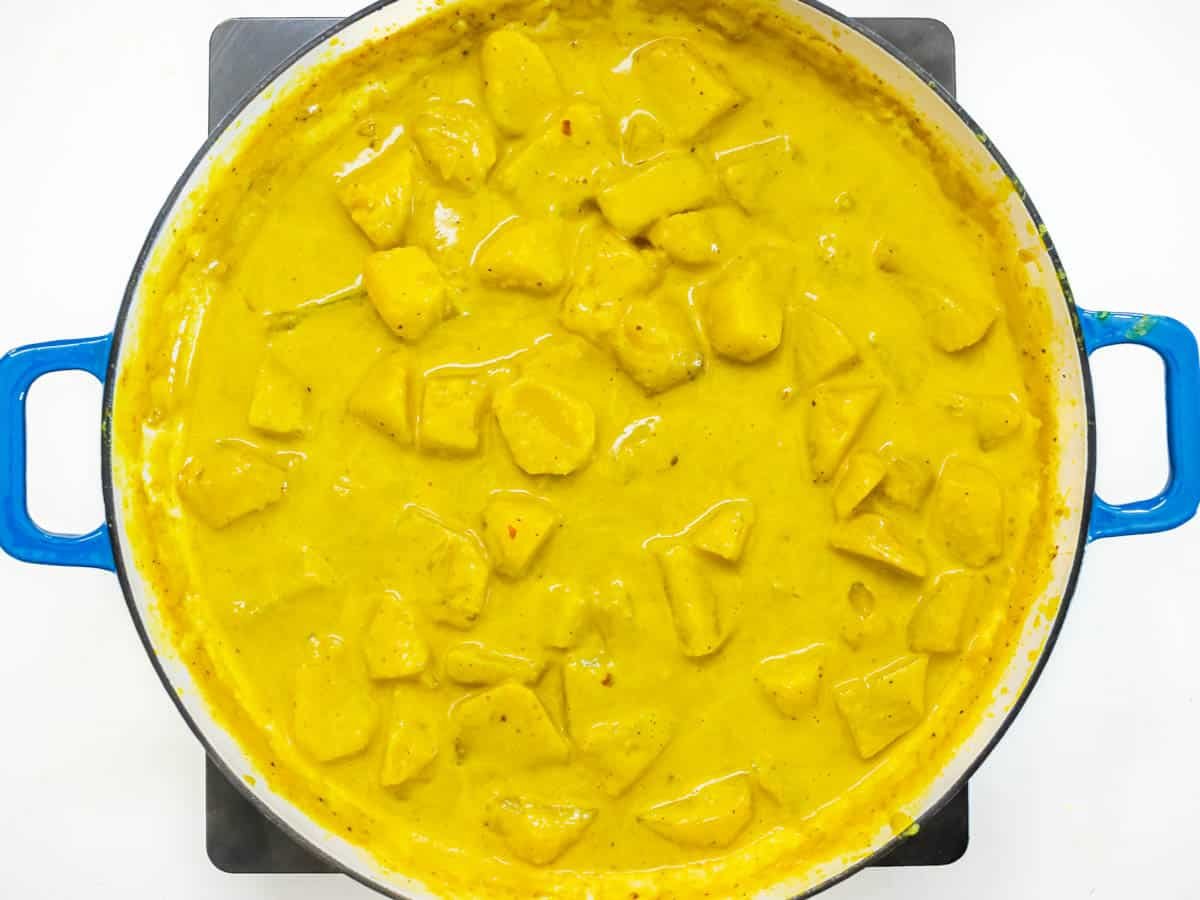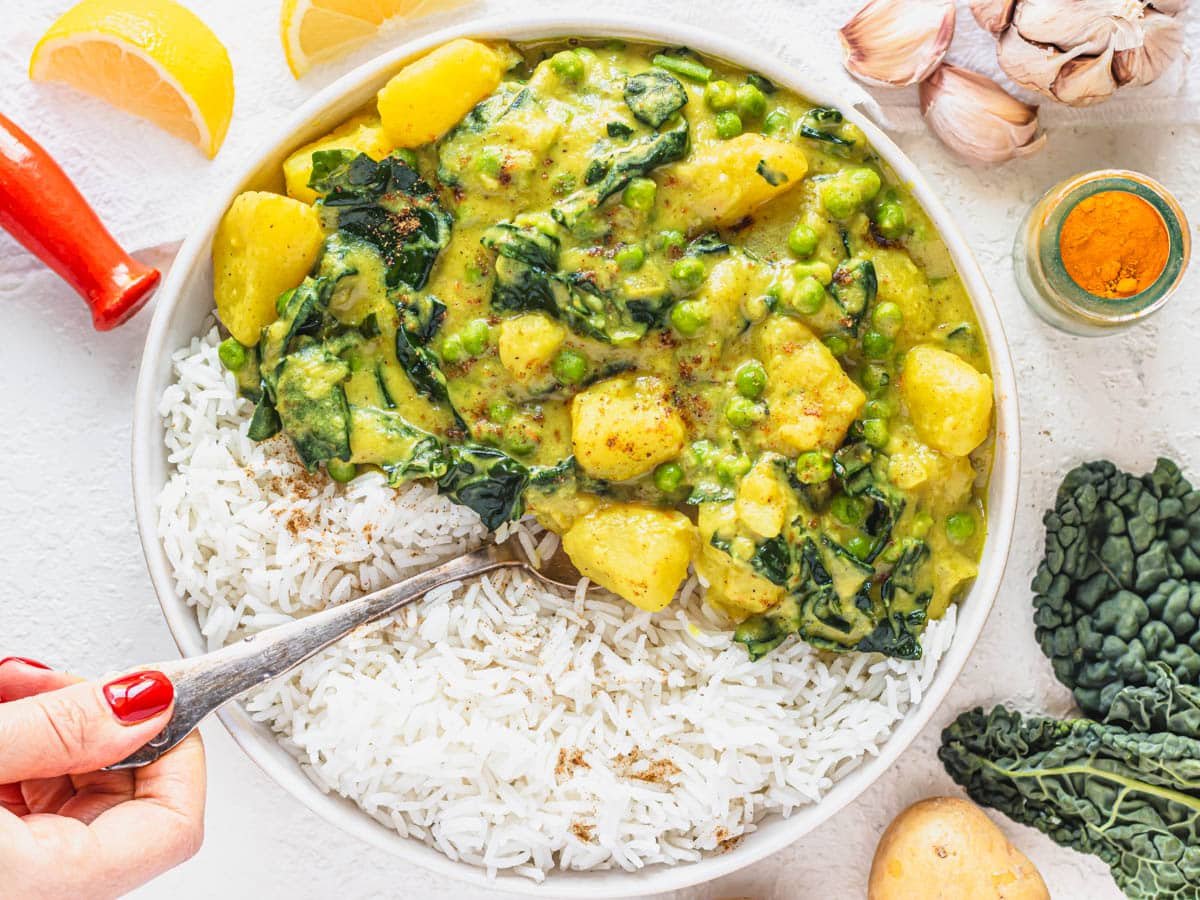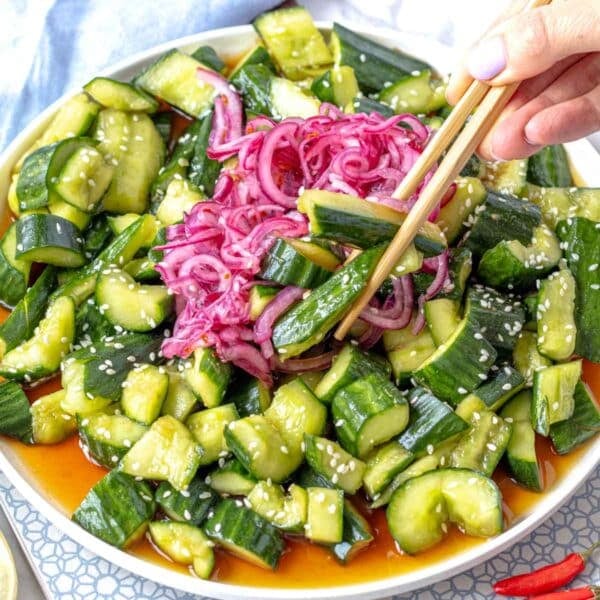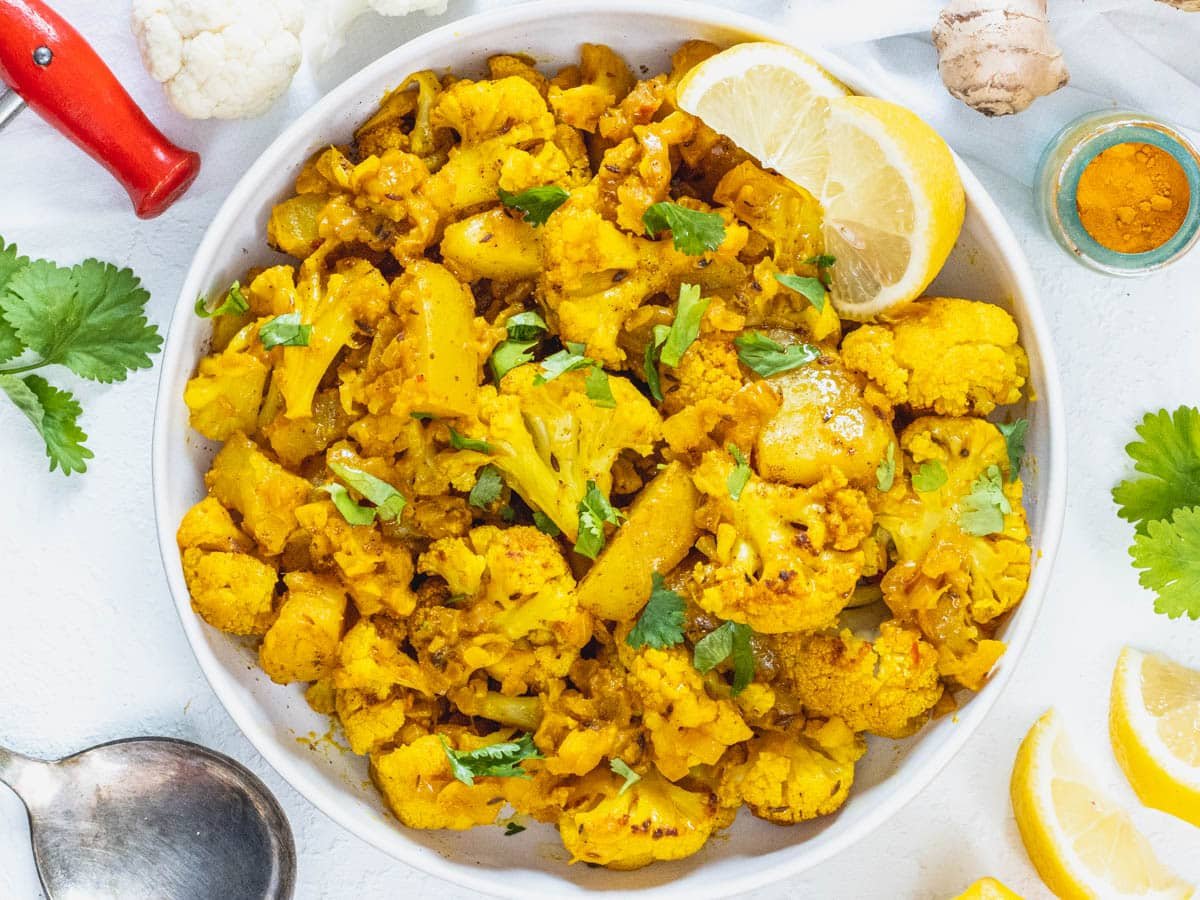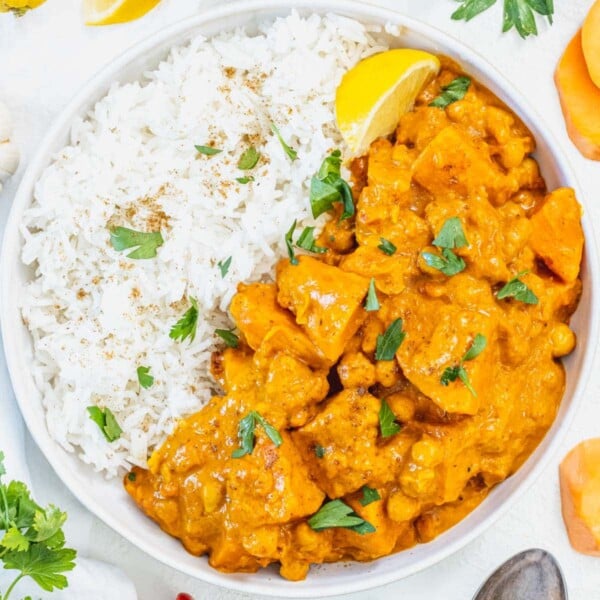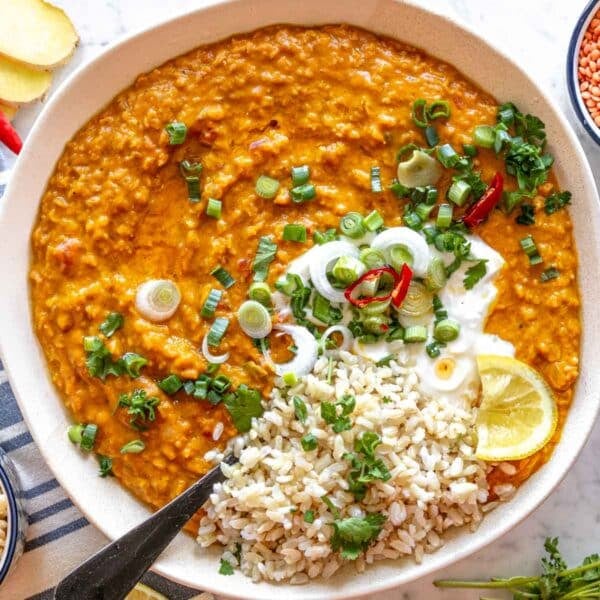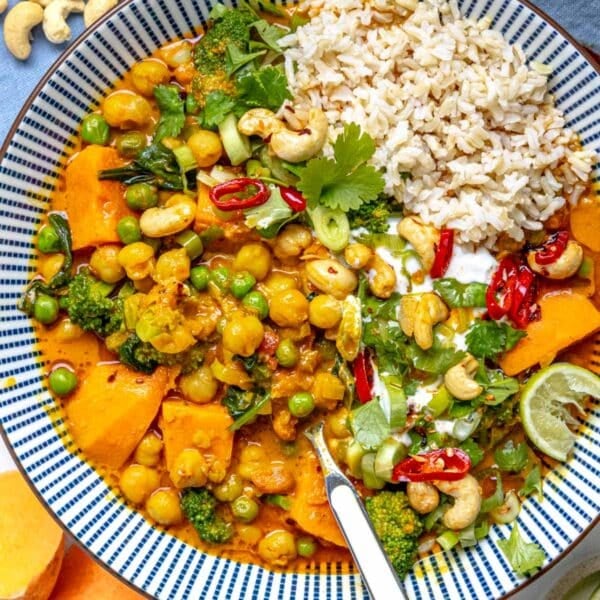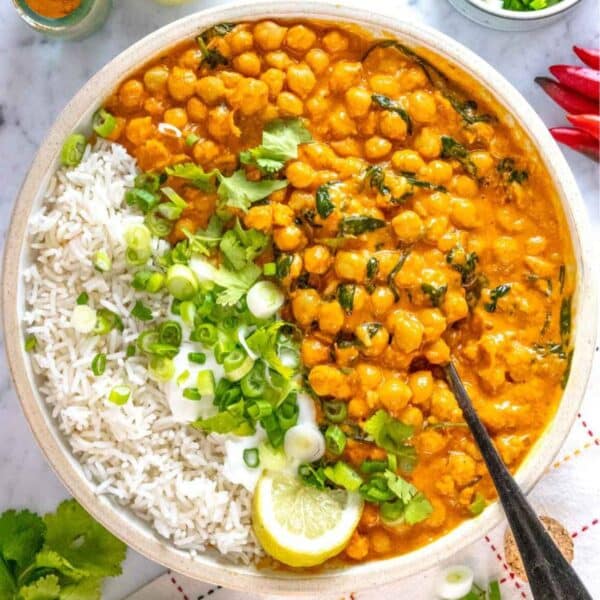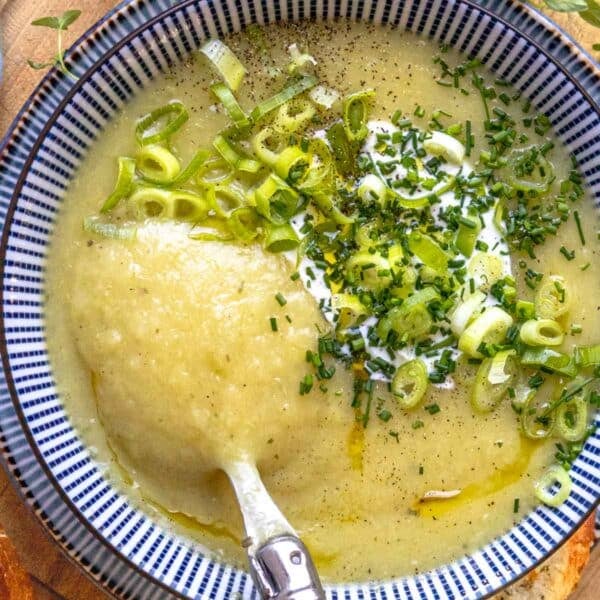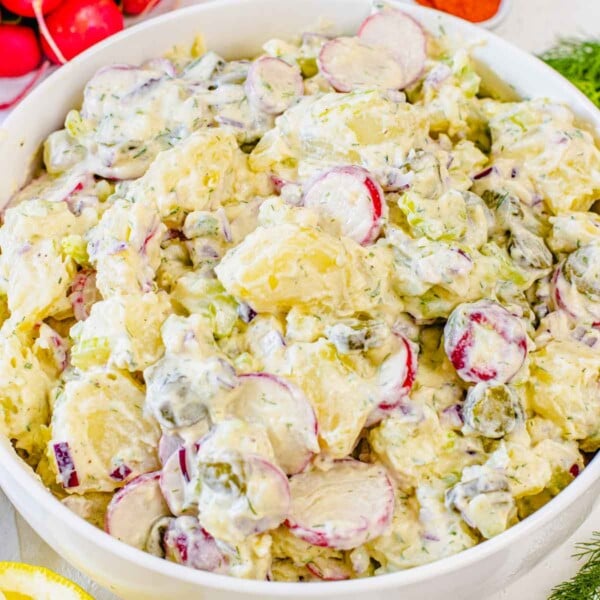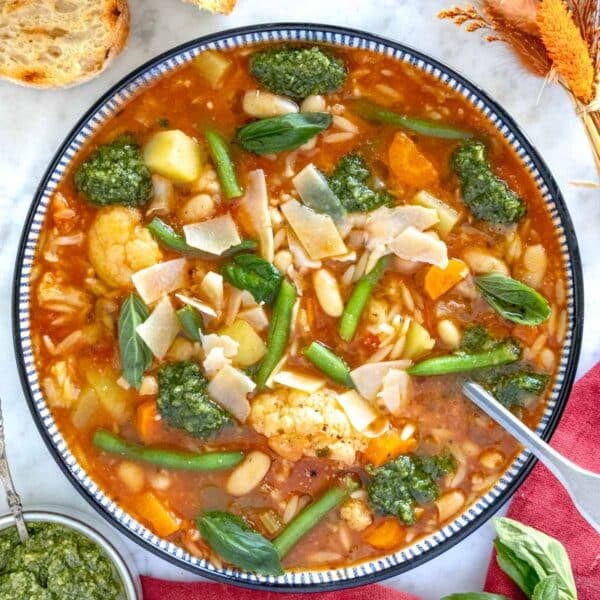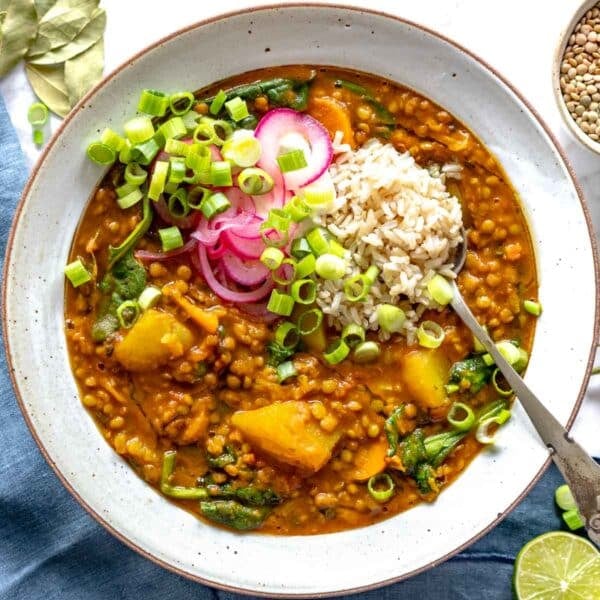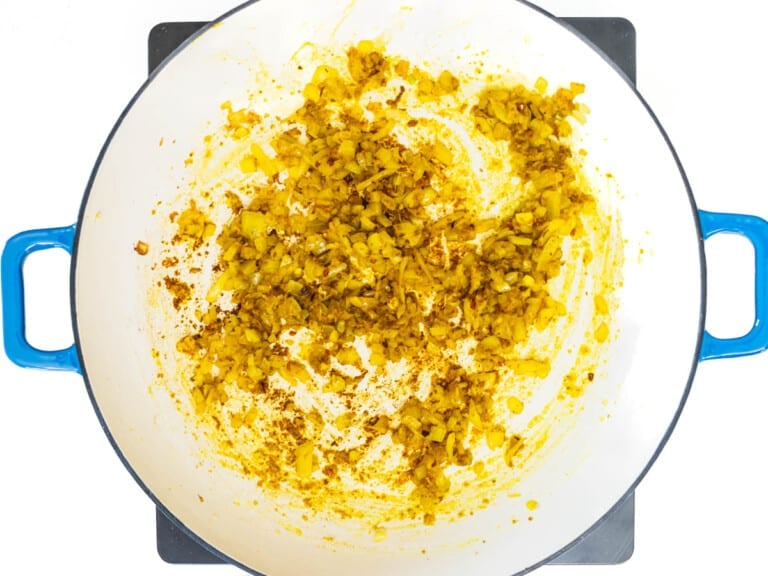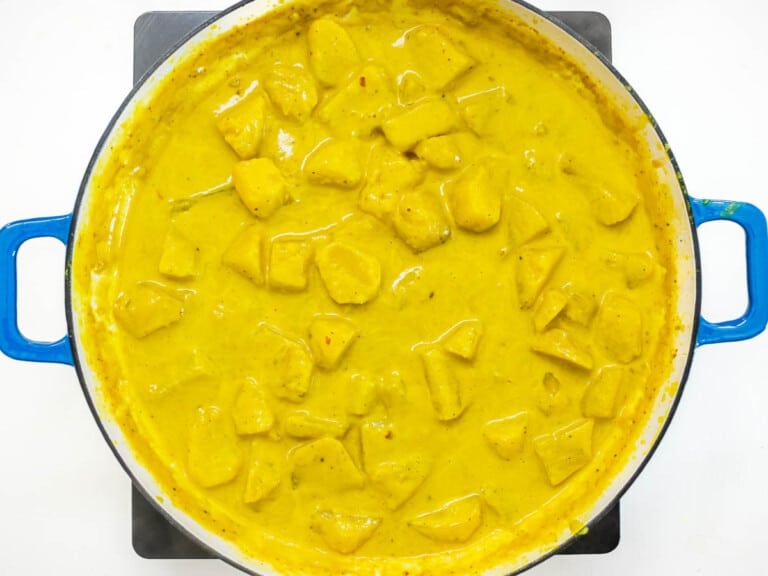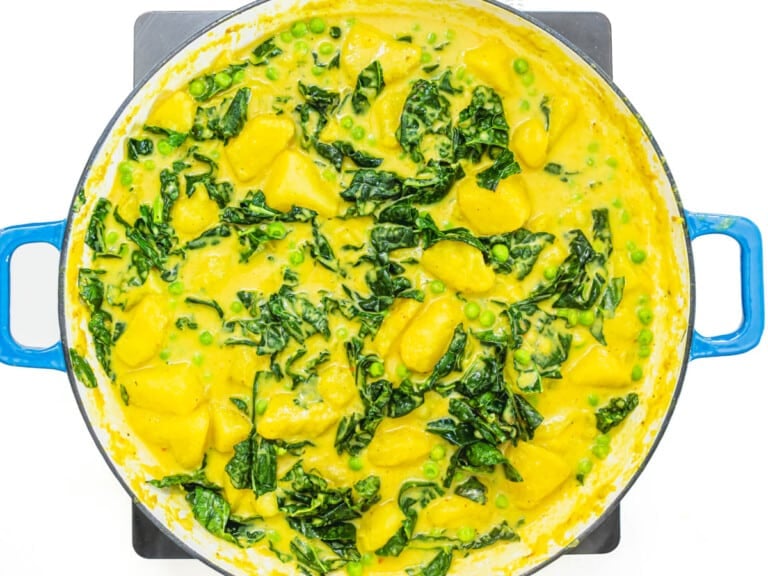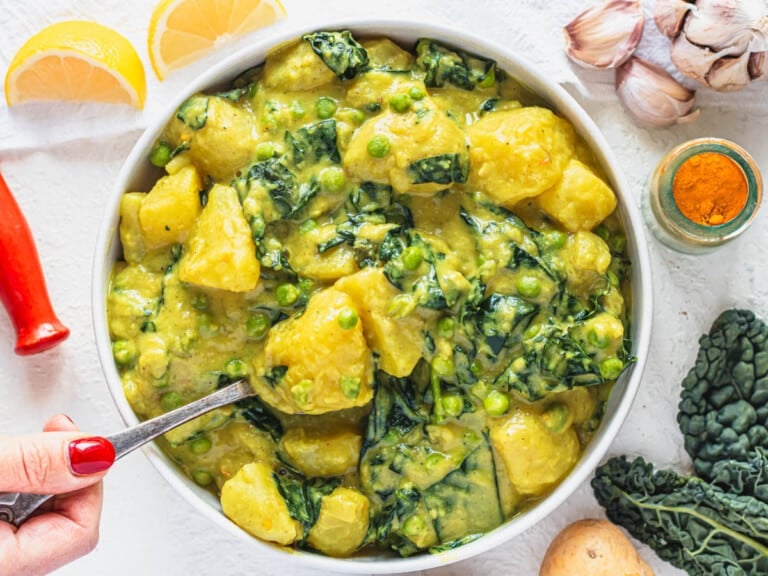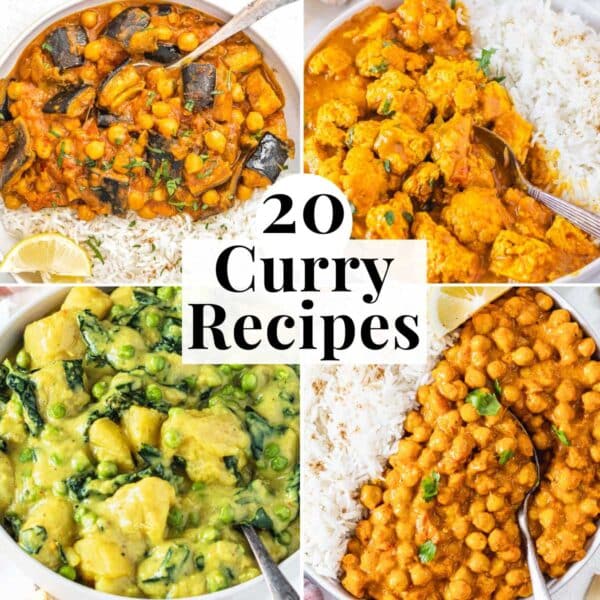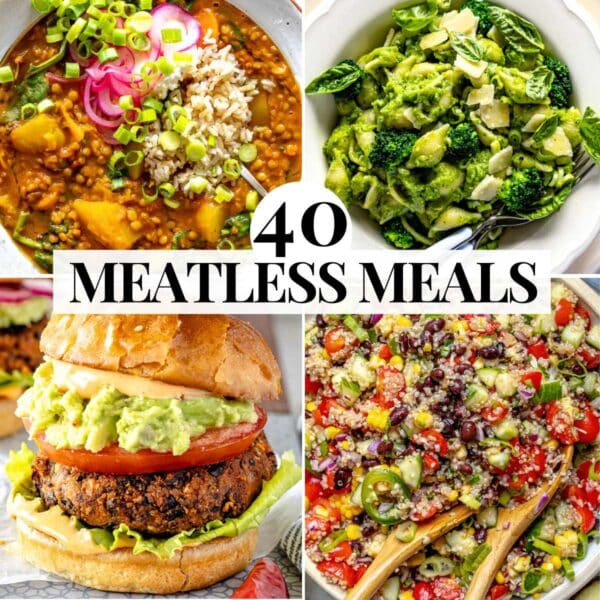Our recipe is easy to make in one pot and excellent for a weeknight dinner or meal prep. Leftovers keep well for days and become even more flavorful the day after. Dietary Note: this recipe is suitable for vegetarians, vegans, and people on a gluten-free diet.
Potato curry video
Ingredients & Substitutions for potato curry
How to make potato curry
Serving suggestions
Variations
Questions
Storage & Make Ahead
More curry recipes
More potato recipes
Our tip is to grate the ginger and garlic with the small holes of a box grater or a zester so that they turn into a paste that infuses the potato curry with beautiful aromas. We use ground cumin, turmeric powder, and garam masala for the spices. Those are just suggestions; you can add and remove spices as you please. For example, ground coriander and curry powder would also work wonderfully in this recipe. Before eating, top it with some fresh lemon or lime juice, a dollop of yogurt or raita, and freshly chopped cilantro. For a tasty, wholesome, and satisfying dinner, serve with warm naan or basmati rice.
Flavor Base
A good flavor base is essential when making curries, soups, and stews, so don’t skimp on this step. It will make all the difference in the flavor of the final dish. For our potato curry, we use a classic Indian flavor base made with:
Oil: you can use olive oil, avocado oil, coconut oil, or rapeseed oil. We use olive oil. Onion: finely chopped. You can use white or yellow onion. Garlic: always fresh when making curry. We recommend grating it with the small holes of a box grater or a zester. Substitute garlic with store-bought garlic paste. Ginger: also fresh. Like the garlic, peeled and grated.
Spices
Take our recipe as a template and adjust the spices based on your preference. We use:
Cumin: you can use ground cumin or cumin seeds. Turmeric powder Red pepper flakes: substitute chopped fresh red chilies or cayenne pepper. Garam masala: an Indian spice blend you can find online or in most Asian markets. We add it at the end to preserve its rich flavor and aroma.
Optional spices you can add to make this potato curry even more flavorful are listed below. Start with one teaspoon and add more if required.
Ground coriander Curry powder
Vegetables
Like with the spices, take our recipe as a suggestion, and feel free to add your favorite veggies.
Potatoes: you can use any. We tried this recipe with Yukon Gold potatoes, Russet Potatoes, and new potatoes, and they all worked beautifully. Substitute sweet potatoes, eggplant, or cauliflower florets for potatoes. Peas: we use frozen peas. Substitute cooked or canned chickpeas, snap peas, green beans, or snow peas for frozen peas. Edamame beans would also work. Kale: substitute Swiss chard, spinach, or cabbage for kale.
Liquids
Coconut milk: we use full-fat coconut milk that comes in a can. Vegetable broth: you can use homemade or store-bought vegetable broth.
We don’t add canned tomatoes to potato curry because we love the golden and green colors of this beautiful dish. Optionally, you can add one can of crushed tomatoes.
Salt & Black Pepper
We use sea salt and freshly ground black pepper.
Serves well with
Fresh lemon juice: substitute lime juice. Yogurt: plain, Greek-style, or yogurt-cucumber sauce (raita). Fresh coriander: chopped and sprinkled on top. Rice: boiled basmati rice, jasmine rice, long grain rice. Bread: naan, pita bread, roti, or piadina. Other: couscous, boiled farro, and quinoa.
Heat the oil in a large skillet. Add the finely chopped onion and cook it gently for 5 minutes. Add grated garlic, grated ginger, red pepper flakes, ground cumin, and turmeric powder and cook while stirring for another minute. Tip: this first step of building a flavor base and toasting the spices is essential to infuse the potato curry with a rich, warm, and complex flavor. Stir in the coconut milk, vegetable broth, and potatoes; peeled and cut into bite-size pieces. Scrape all the brown bits from the bottom of the pan as you add the liquids. Season with salt and black pepper, then cover with a lid, bring to a boil, and simmer on medium heat for 15 minutes, stirring occasionally. Add frozen peas and chopped kale leaves (remove the harder stems) and simmer for about 10 more minutes or until the potatoes are fork-tender. Finally, turn the heat off, stir in the garam masala, let it cool down for 3 to 5 minutes, and serve. Remember to add a squeeze of fresh lemon juice before eating. Optionally, add a dollop of Greek-style yogurt, yogurt cucumber sauce, or raita on top. If you need a side dish for this, then we recommend something simple and refreshing, like:
Cucumber tomato salad or Shirazi salad Asian cucumber salad Lentil tabbouleh or bulgur tabbouleh Mango salad or avocado salad
Cucumber Tomato Salad
Asian Cucumber Salad
Tzatziki
Tomato Salad
We roast the cauliflower and the potatoes in the oven for maximum flavor. Check out our aloo gobi recipe. Spices might vary in intensity based on the brand, quality, and how long they have been in your pantry. So, it is good practice to taste and adjust if necessary. Refrigerator: let the curry cool down at room temperature, then transfer it into an airtight container and store it in the fridge for up to 4 days. Freezer: Let it cool down completely, then transfer it to a freezer-friendly container and freeze it for up to 3 months. Thaw & Reheat: defrost slowly in the refrigerator over several hours or in the microwave with a thawing function. Reheat in the microwave for 4 minutes or in a saucepan with a splash of water.
Sweet potato curry Vegetable curry Lentil curry Chickpea curry Tofu curry Eggplant curry
Sweet Potato Curry
Lentil Curry
Vegetable Curry
Chickpea Curry
Potato Leek Soup
Dill Potato Salad
Vegetable Soup
Curry Lentil Soup
20 Easy Curry Recipes
45 Easy Vegetarian Dinner Recipes
40 Easy Meatless Meals
30 High Protein Vegetarian Meals
